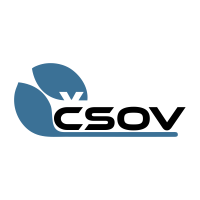Programme
- Full Conference Schedule (updated September 4, 2019)
- Conference Practical Book (updated September 4, 2019)
General Schedule
| Tuesday, September 10, 2019 | 19:00 | 20:15 | registration (building A) |
| Wednesday, September 11, 2019 | 8:30 | registration (building F) | |
| 10:00 | 11:30 | opening ceremony, plenary session | |
| 13:00 | 16:30 | parallel sessions | |
| 17:00 | 18:30 | meeting of the Czech Society for Operations Research | |
| 19:00 | 22:00 | welcome evening | |
| Thursday, September 12, 2019 | 8:30 | registration | |
| 8:50 | 12:00 | parallel sessions, PhD student competition | |
| 13:45 | 20:00 | conference trip, conference dinner | |
| Friday, September 13, 2019 | 8:15 | registration | |
| 8:30 | 9:50 | parallel sessions | |
| 10:20 | 11:20 | plenary session, farewell ceremony |
Plenary Speakers
Ronald Hochreiter
Webster Vienna Private University & WU Vienna University of Economics and Business
Academy of Data Science in Finance
Expert in the fields of Decision Sciences (Optimization under Uncertainty) and Artificial Intelligence (Data Science, Machine Learning and Deep Learning). Project leader of EU H2020 and Erasmus+ projects and of the FFG ASAP (Austrian Space Application Program) project ReKlaSat 3D - Deep Learning on Satellite Images and Satellite Image Point Cloud Reconstructions (2017-2019). President and CEO of the Academey of Data Science in Finance – a non-profit organization to build a platform for everyone interested in Data Science and Finance in Austria.
From AI and Data Science back to Operations Research and Financial Modeling
Abstract: Financial organizations require various quantitative tools to reduce the complexity of the quantitative decision process - especially in the age of Big Data. The recent AI hype led many people to believe that a responsible mathematical modeling of the underlying (financial and economical) problems can be safely outsourced to machines. One has to be forgiving because through Social Media and other non-peer-reviewed media channels Artificial Intelligence (AI) promised to change the world (once again). Data Scientists who integrate AI methods into business processes are one of the most sought-after group of experts at the moment - regardless whether they understand the thematic challenge or not. Within the last few years classical Machine Learning technologies which were around for at least 20-30 years regained enormous popularity due to fascinating applications which are facilitated by Deep Learning which is based on Artificial Neural Networks. The hugely increased computing power especially due to the availability of GPUs allows for massively deep Neural Networks being fit to Big Data problems. However there are actually two main types of AI problems. The first one includes Robotics, Industry 4.0 and Internet of Things (IoT) and considers technological elements which basically either work or fail. The second one is concerned with erratic structures like humans (customers, clients, employees, ...), financial markets and meteorological data. Consider a simple but telling example where the same human customer might behave differently in the morning and in the afternoon due to how lunchtime was perceived which makes it difficult to use plain pattern-matching methods. In this lecture we contrast these two areas and show that in the area of Robotics a rather plain machine-only, self-learning AI approach might be successful while in the other one - which is extremely important for the whole field of Banking and Finance - the emphasis has to be put on human creativity when applying AI technologies. In the latter case methods of Operations Research, Econometrics and other mathematical sound approaches to solving quantitative decision problems have shown to be of much more use by cleverly integrating Human Intelligence into the modeling process. It is time to renew the fascination of Computational Management Science without using AI jargon - this talk aims to provide some relevant pointers to use for this talk.
Gustav Feichtinger
ORCOS, Institute of Statistics and Mathematical Methods in Economics, Vienna University of Technology
Wittgenstein Centre for Demography and Global Human Capital (IIASA, VID/ÖAW, WU)
The Mathematics of Ageing
Abstract: Age is a crucial variable in social sciences and particularly in population dynamics. In the first part of this paper, a two-state optimal control model is proposed to explain the substantial variations of scientific production over the life cycle of researchers. We identify conditions under which typical hump-shaped age-specific´patterns of scientific production turn out to be optimal for individual researchers. The second part of the paper deals with the ageing of learned societies. In a nutshell, the dilemma of a learned society is that keeping young, i.e. electing young entrants, has the drawback of reducing the replacement rate of members. It turns out that electing a mix of young and old members delivers the optimal solution of the problem, i.e. guaranteeing a young age structure, while ensuring a high recruitment rate.




